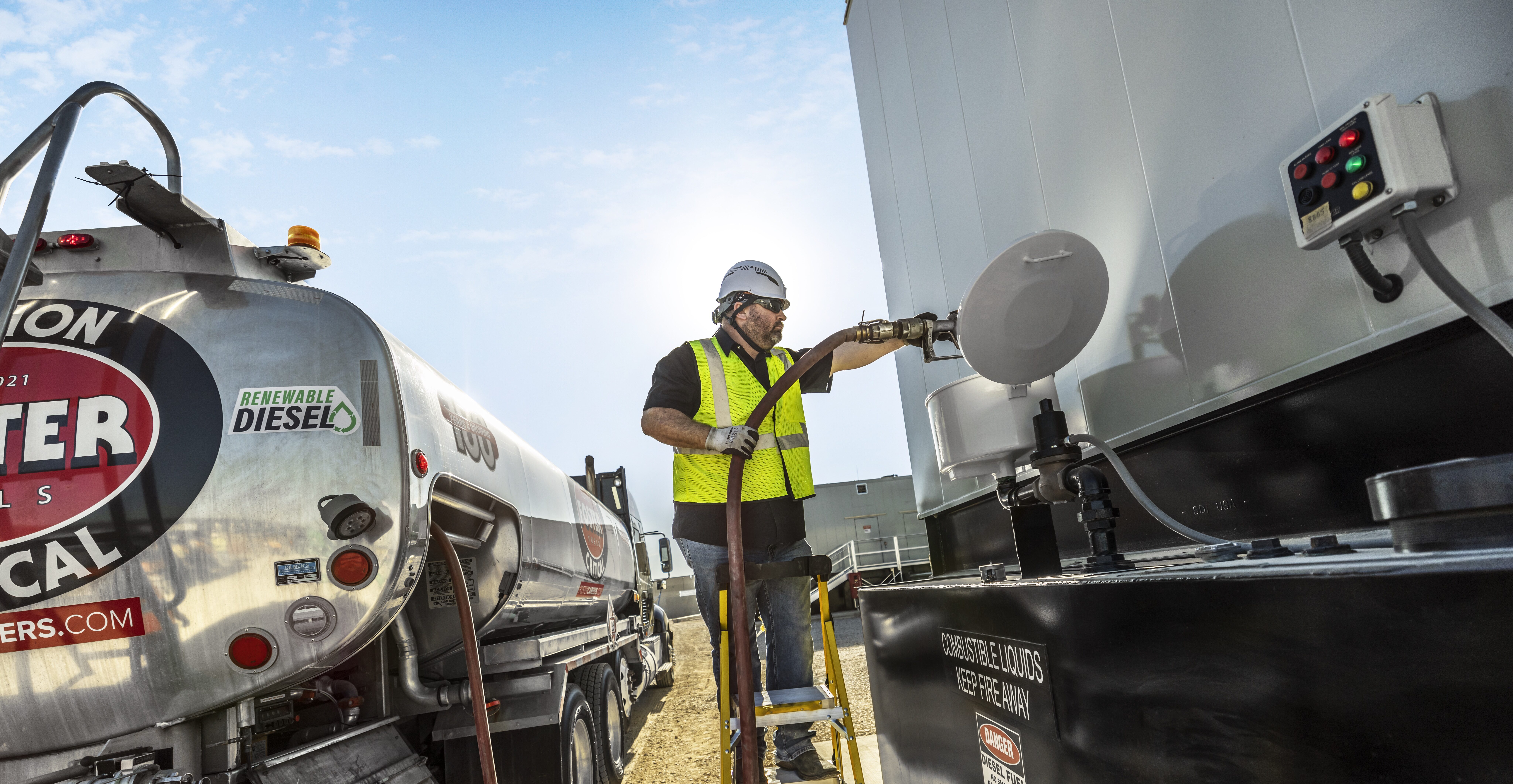Since the dawn of big data, diesel-powered generators have kept data centers humming during power outages–whether it’s a storm knocking out the grid, or too much demand on the system due to extreme heat. As the backbone of the digital economy we all rely on, data centers require consistent power, and virtually all of them rely on generators for backup power. That makes the transition away from diesel, which fuels generators but produces significant amounts of harmful pollutants along the way, a challenge.
At Compass Datacenters, we’ve long prioritized low-carbon choices because we want our data centers to be around for a long time. We believe critical infrastructure, like data centers, should last for 100 years or more, which means making choices that may cost more initially, but pay dividends long-term. Those choices are baked into how we operate, and what we build. Our roofs are made from materials that keep them cool, and our buildings use CarbonCure manufactured concrete, which keeps captured CO2 from releasing back into the atmosphere. So, staying true to our values, we set out to find an alternative to conventional diesel.
When we began testing hydrotreated vegetable oil (HVO) to fuel our backup generators, we discovered that it reduced GHGs by as much as 85%. So, in 2022, Compass began rolling out HVO from our partner Foster Fuels to generators at our campuses in Northern Virginia, Arizona and Texas.

So what exactly is HVO Fuel?
It’s a little different from the vegetable oil you reach for when cooking. HVO is a synthetic biodiesel fuel developed from vegetable oils and fats, including tall oil (a byproduct of paper manufacturing), soybean oil, waste cooking oil and animal fats. These source oils get heated with hydrogen and catalysts at high temperatures and pressure to create a biodegradable, non-toxic, and antimicrobial fuel (meaning it can prevent bacteria-fueled slush from contaminating fuel lines).
Because HVO is chemically very similar to diesel fuel, using it doesn’t require data centers to give up their existing generators or have a real impact on efficiency. Additionally, it works well in cold temperatures as low as -32°C.
HVO fuel at Compass Datacenters
Compass Datacenters has grown substantially since adopting HVO fuels in 2022. Thankfully, the decision to adopt HVO fuels preceded this period of rapid expansion to minimize emissions. Cumulatively, use of HVO fuels has driven a 16% – 20% reduction in NOx and a 38% – 40% reduction in CO2 relative to using conventional diesel. And while costs were initially much higher – 1.5 to 2x times more – to use HVO, they have come down by about 30%. We expect costs to continue to trend down as demand for HVO grows, and production scales as a result.
Over the past couple years, more and more data centers have adopted HVO. Amazon Web Services (AWS), one of the largest cloud providers, announced it was kicking off the transition to HVO for its data centers across the US and Europe. Digital Realty, another data center firm, rolled HVO out to some of its backup generators in the US. As other data centers follow suit, greater demand for HVO has made it more readily available as more suppliers manufacture HVO to meet the demand.
Use of HVO has grown beyond data centers, too. FedEx began using it in its linehaul trucks in the UK, and Volvo also began fueling its trucks with HVO. This momentum means HVO production will continue to grow, bringing down costs and making it an attractive option for more data centers and beyond.
HVO isn’t the final solution to the data center power challenges. We see it as a “right now” solution, and a bridge helping us get to something better. Many of the world’s greatest minds are working to develop long-term clean energy options, and whether that’s hydrogen fuel cells, nuclear, fully renewable energy or something else entirely, we have yet to find out.
At Compass, we’re big on continuous improvement and incremental gains. HVO gives us a way to make a real dent in emissions today without costly infrastructure overhauls. That’s why, even if it’s not the perfect solution, we’re all in on HVO.
Curious to learn more about Compass’ commitment to sustainability? Check out our latest ESG Report to discover more.


